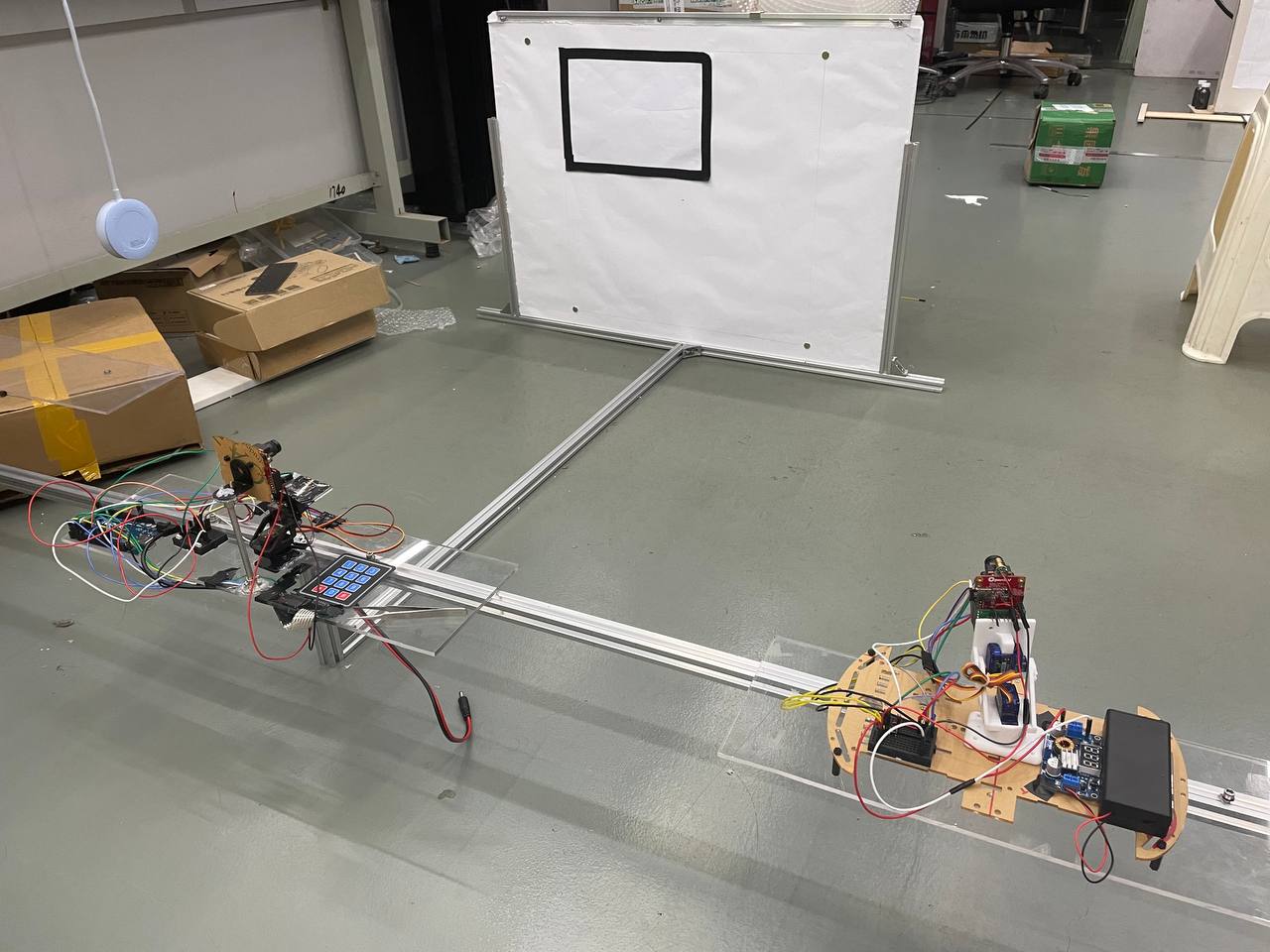National Undergraduate Electronic Design Contest
Overview
In the National Undergraduate Electronic Design Contest (Aug 2023), our team designed and developed a laser motion control and auto-tracking system, earning a provincial second prize. This competition required participants to build an innovative system under rigorous time constraints. Our solution featured precise motion control and real-time tracking using advanced image processing and feedback algorithms.
Results
- Achievement: Provincial Second Prize, ranked second among teams in our school.
- Performance Metrics:
- Successfully implemented precise motion control with an average error of 1.1 cm during testing.
- Achieved stable laser tracking performance with a maximum tracking error of 3.6 cm under moderate speeds.
- Presentation: Delivered a working prototype meeting the core requirements under competitive time constraints.
[Report PDF (Chinese version)]

Technical Details
- System Architecture:
- Two independent servo-driven gimbals controlled by an Arduino Mega2560 microcontroller.
- Image processing conducted via OpenMV H7 to identify and track red and green laser spots.
- Algorithms:
- Coordinate Mapping: Developed a nonlinear mapping between screen coordinates and gimbal angles using MATLAB-based regression.
- Motion Control: Employed discrete PID algorithms for trajectory interpolation and servo adjustments.
- Tracking: Enhanced tracking accuracy with Kalman filtering to predict and correct laser positions.
- Challenges:
- Overcame mechanical inaccuracies by calibrating servo feedback with additional correction factors and replacing faulty servos to improve trajectory precision.
- Improved image processing robustness under varying light conditions through optimized exposure settings and LAB color space filtering.
- Enhanced tracking success rates for high-speed laser movements by adjusting control frequencies and refining PID parameters for smoother tracking.
Reflection and Insights
This competition was a test of endurance, adaptability, and teamwork. The intense four-day schedule required rapid problem-solving and collaboration. The experience highlighted the importance of robust system design and precise calibration in achieving high-performance results. It also reinforced the value of integrating advanced algorithms, such as Kalman filtering, to address real-world constraints.
Team and Role
- Team: A three-member team collaboratively handled hardware design, software development, and optimization.
- My Role:
- Led the implementation of image processing algorithms and Kalman filtering.
- Developed and tested the PID control system for trajectory tracking.
- Conducted system debugging and parameter tuning under competition constraints.